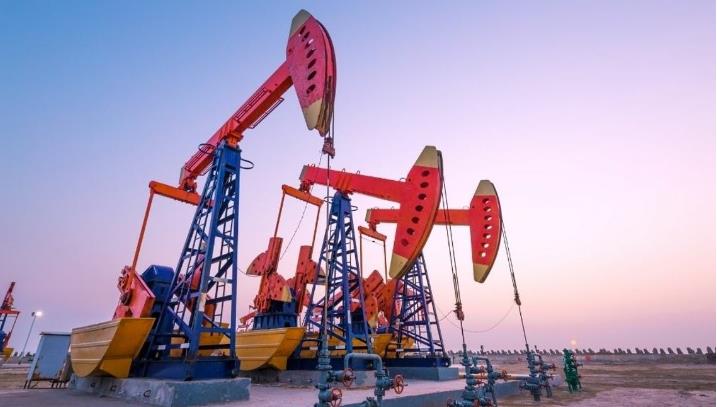Understanding Oil and Gas Well Drilling
Oil and gas well drilling is a complex and dynamic process at the core of the energy industry. This intricate operation involves extracting hydrocarbons from beneath the Earth’s surface, playing a crucial role in meeting global energy demands. This article delves into the key components, techniques, challenges associated with oil and gas well drilling, and explores the various simulation technologies employed in the process.

The Process of Oil and Gas Well Drilling
1. Exploration and Site Selection
Before drilling begins, extensive geological surveys and analyses are conducted to identify potential reservoirs. Once a promising site is located, the drilling process commences.
2. Well Design
Engineers design the well, considering factors like depth, reservoir characteristics, and drilling conditions. The wellbore design includes casing and cementing plans to ensure structural integrity and prevent environmental contamination.
3. Site Preparation
Preparing the drilling site involves clearing the area and constructing a drilling pad. Essential infrastructure, such as access roads and wellhead facilities, is also established.
4. Drilling Rig Setup
Mobile drilling rigs, tailored to the project's needs, are transported to the site. These rigs can be either onshore or offshore, depending on the drilling location.
5. Spudding In
Drilling begins with "spudding in," where the drill bit is gradually lowered to the desired depth. This phase establishes the initial section of the wellbore.
6. Drilling Operations
The drilling process continues with a rotating drill bit attached to a drill string. Drilling mud, a mixture of fluid and additives, is circulated to cool the bit, transport cuttings to the surface, and control pressure.
7. Casing and Cementing
Steel casings are inserted into the wellbore to prevent collapse and protect groundwater. Cement is pumped into the annulus between the casing and the wellbore, securing the casing and isolating different geological formations.
8. Well Completion
Upon reaching the target depth, the well undergoes completion. This involves installing production tubing, perforating the well to access the reservoir, and sometimes hydraulic fracturing to enhance hydrocarbon recovery.
Challenges in Oil and Gas Well Drilling
1. Geological Complexity
Drilling through various geological formations, from hard rock to soft sediment, presents significant challenges, particularly in deepwater environments.
2. High Pressure and Temperature
Some reservoirs exhibit extreme pressure and temperature conditions, requiring specialized equipment and engineering to ensure the wellbore's safety and integrity.
3. Environmental Concerns
Minimizing environmental impact is critical. Proper well design, casing, and cementing are essential to prevent fluid and gas migration to the surface.
4. Technological Advancements
The industry continuously adopts new technologies, such as advanced drilling techniques, real-time data monitoring, and automation, to improve efficiency and reduce costs.
Simulation Technologies in Oil and Gas Well Drilling
The oil and gas industry has embraced technological advancements, particularly in simulation technology, which has significantly transformed well planning, execution, and optimization.
1. Drilling Simulators
Training and Skill Development: Drilling simulators create a realistic virtual environment for training rig operators and drilling crews, allowing them to practice different scenarios, equipment handling, and emergency procedures without risks.
Scenario-based Learning: Simulators can replicate various drilling scenarios, such as challenging geological formations, equipment failures, and adverse weather conditions, better preparing teams for real-world challenges.

2. Geosteering Simulations
Virtual Wellbore Navigation: Geosteering simulations enable real-time visualization of the subsurface, integrating geological data with drilling parameters to accurately navigate the wellbore through complex formations.
Risk Mitigation: By simulating different wellbore paths, these tools help identify potential hazards and optimize trajectories, maximizing hydrocarbon recovery while minimizing risks.
3. Reservoir Simulation
Understanding Reservoir Behavior: Reservoir simulations model the behavior of hydrocarbons within the reservoir, assisting in predicting performance, optimizing well placement, and estimating production rates.
Enhanced Recovery Strategies: Simulation tools evaluate Enhanced Oil Recovery (EOR) techniques, such as water flooding, gas injection, and chemical injection, helping operators devise strategies to maximize recovery.
4. Real-time Drilling Simulations
Data Integration: These systems integrate live data from the drilling process, creating a dynamic model that reflects current conditions and enhances decision-making.
Decision Support: Real-time simulations allow operators to test different parameters and make informed decisions quickly, optimizing drilling efficiency and reducing risks.
5. Well Control Simulations
Emergency Response Training: Well control simulators mimic emergencies like blowouts, enabling teams to practice response strategies and well control procedures, which are crucial for handling critical incidents.

Regulatory Compliance: These simulations help demonstrate the efficacy of well control measures, ensuring operators meet regulatory requirements and can manage unexpected events safely.
Conclusion
Oil and gas well drilling is a multifaceted process that demands a balance of engineering expertise, advanced technology, and environmental responsibility. Simulation technologies significantly enhance the efficiency, safety, and performance of oil and gas well drilling, from training and skill development to real-time decision support and emergency preparedness. As the industry continues to evolve, the integration of these technologies will play an increasingly vital role in meeting global energy demands.
- Art
- Causes
- Crafts
- Dance
- Drinks
- Film
- Fitness
- Food
- Giochi
- Gardening
- Health
- Home
- Literature
- Musica
- Networking
- Altre informazioni
- Party
- Religion
- Shopping
- Sports
- Theater
- Wellness


